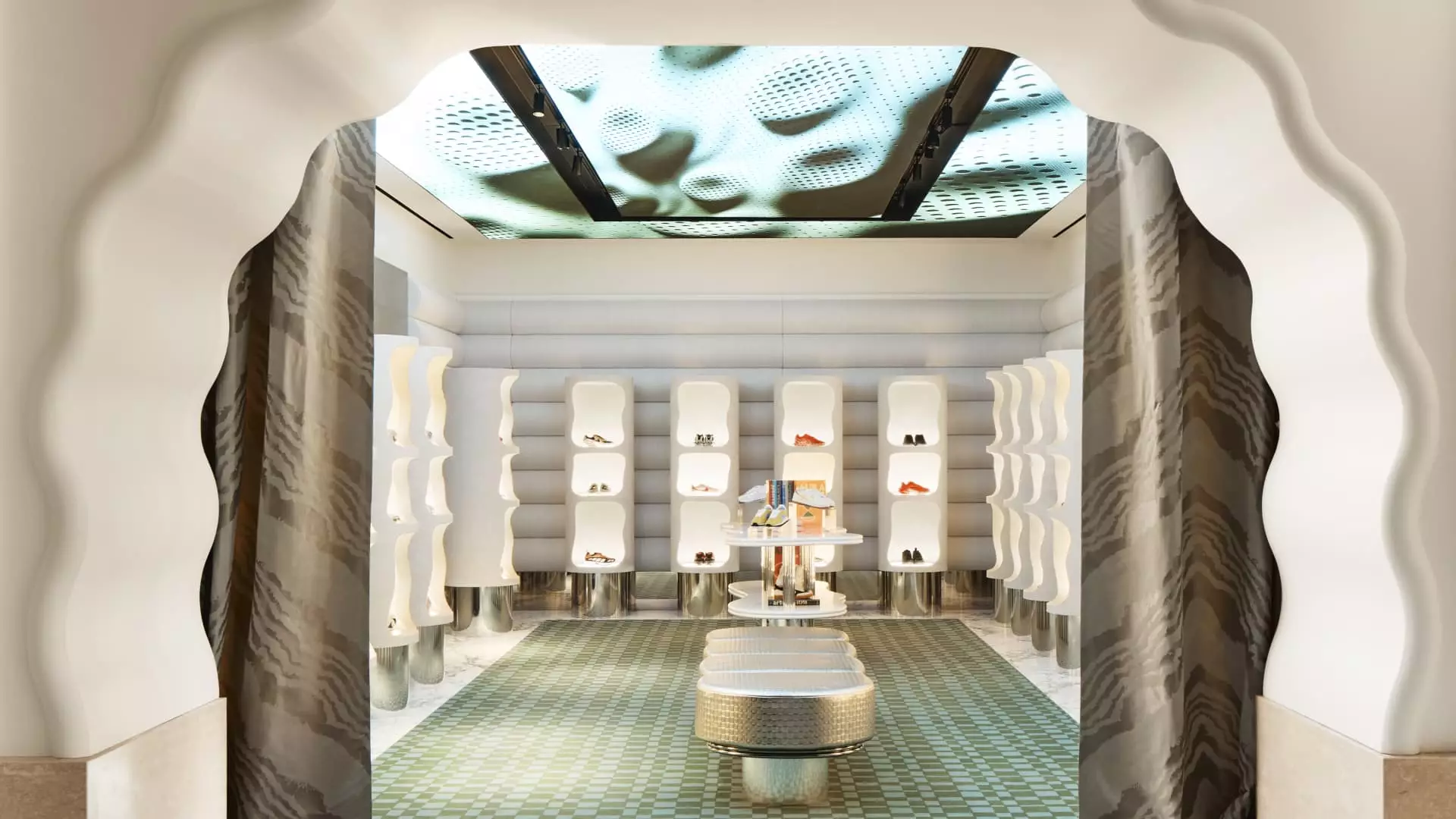The iconic French luxury retailer, Printemps, has made a grand entrance into the U.S. market with its first store in the Financial District of New York City, and while its mere existence excites fashion enthusiasts, it also raises eyebrows about its sustainability. Spanning 55,000 square feet across two glorious floors, Printemps is not your average luxury retail store. It boasts a mix of French heritage and contemporary retail strategies that appeal to millennial and Gen Z consumers alike. However, the retail landscape as it stands today shows signs of instability, signaling that this imported Parisian dream might encounter turbulence.
Luxury Saturation in a Changing Economy
The luxury market is undergoing a significant paradigm shift. Once a domain of stability, it’s now fragile, marked by economic uncertainty and changing consumer tastes. Printemps launches amid reports of slowed luxury spending, particularly in key markets such as China, where the demand for high-end brands hasn’t noticeably recovered post-pandemic. According to consulting firm Kearney, luxury sales are projected to grow only 1% to 3% annually through 2027. When luxury retailers seem to be treading water, is it wise for Printemps to dive into such a competitive and volatile space?
This question looms large. While Printemps claims that Americans have become more frequent visitors to Parisian stores, it’s essential to consider whether this enthusiasm will translate into sustained spending habits back on home turf. With inflation pinching even the wealthiest consumers’ wallets, will those three-times-a-year luxury purchases truly saturate the market as Printemps anticipates?
Design vs. Accessibility: A Delicate Balance
Printemps pulls out all the stops with its stunning architectural features and a unique shopping experience designed to mimic a Parisian apartment. It’s even got a “shoe forest”—a whimsical creation brought to life in a historic Art Deco setting. However, amidst this creativity, one must ponder whether the exuberance of design could overshadow the fundamental purpose of retail: accessibility. Tourists may marvel, but how will local customers perceive a luxury store that offers an experience more akin to a theme park than a shopping destination?
Luxury retailers often find themselves in a bind: they need to create experiences that differentiate them, yet they risk alienating everyday consumers. Printemps intends to incorporate more approachable luxury items amidst its exclusive offerings, aimed at drawing in browsers and casual buyers. Yet, one can’t help but wonder — can they genuinely balance that delicate equation? Or will the store cater too heavily to an elite demographic, leaving average consumers feeling out of reach?
The Experience Economy: A Double-Edged Sword
In an era where experiences are valued even more than products, Printemps makes a savvy move by prioritizing experiential shopping, complete with beauty treatments and fine dining options. However, the concept of luxury spending being heavily reliant on in-person experiences raises its own concerns. As digital retail continues to evolve, consumers may find that a spectacular physical presence doesn’t always translate to meaningful relationships or brand loyalty.
With several high-end brands investing in eye-catching physical stores, Printemps faces stiff competition not merely in luxury offerings but also in crafting awe-inspiring customer experiences. Brian Ehrig from Kearney posited that in-person experiences foster genuine customer connections, but don’t we consider the possibility of fatigue in a saturated market? As luxury becomes a common fixture, the uniqueness and excitement of exclusive shopping experiences could wear thin.
A Risky Bet: Timing is Everything
Launching such a massive venture in light of an impending economic uncertainty can be viewed as reckless or visionary, depending on your perspective. Printemps executives, including CEO Jean-Marc Bellaiche, appear relentlessly optimistic. They anticipate a revival in luxury spending akin to the boom years post-2020. Yet the fluctuating landscape, characterized by inflation and consumer reticence, calls this optimism into question.
For Printemps, the American market does present an intriguing opportunity. Indeed, Americans are not just the third largest spenders at Printemps stores; they also enjoy a penchant for shopping. Yet even this is countered by a reality where discretionary spending is curbed. Will Printemps’ gamble pay off as intended, or will they be forced to reevaluate their strategic positioning sooner rather than later?
The launch of Printemps in New York City holds captivating allure and potential pitfalls. While luxury shopping boasts a glamorous exterior, those who enter this world must tread lightly, knowing that the costs are high, both in financial terms and customer loyalty. As the brand strives for success in a landscape fraught with uncertainties, it is essential to question whether their approach of blending French elegance with American consumerism can yield a fruitful harvest—or merely a dazzling façade.


Leave a Reply